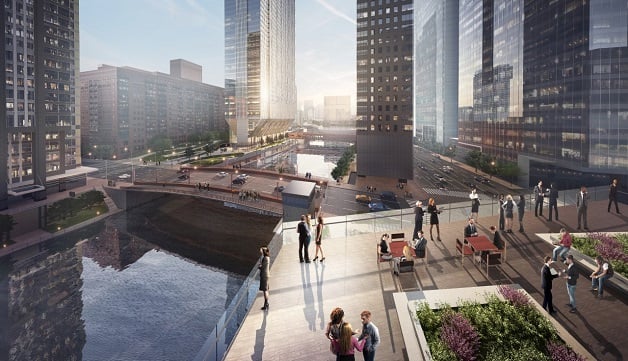
CHICAGO—The CBD's office market has steadily grown for such a long time that observers have begun openly wondering when the inevitable downturn will begin. The latest data show that they will have to wait a bit longer.
“A few months ago, it seemed like we were going to have a bit more of a slowdown, but it hasn't happened,” Eric Feinberg, senior vice president, Savills Studley, tells GlobeSt.com. “Leasing activity has remained remarkably consistent during the second half of the year. Area businesses continue to make significant investments in their workforce and workplace.”
The firm just released its report on the fourth quarter, and found that tenants leased about three million square feet, the third consecutive quarter of above-average activity. Deal volume for 2017 totaled 10.6 million square feet, or 15.2% above the long-term historical average. The West Loop – with 4.7 million square feet leased – was the year's hottest submarket. And even though several million square feet of new trophy office space has opened up recently, downtown's overall availability rate was unchanged at 15.5%. The class A availability rate rose by 70 bps to 16.7% during the quarter, but was also unchanged from year-end 2016.
It's possible that developments beyond Chicago have helped buoy the office market. “Whether or not you agree with the politics, the tax cuts recently enacted will be beneficial for a lot of companies,” says Feinberg, and could have influenced some decisions to expand.
The class A gross asking rent increased by 1.6% during the quarter, averaging $44.56. The overall downtown asking rent rose by 1.4%, from $38.83 to $39.36. But he does not believe that rents will keep rising, largely because the city's developers will soon bring large amounts of new space to the market.
Not only will the CBD soon see new offerings in or near the Loop such as 110 N. Wacker by Riverside Investment & Development and Howard Hughes, or John Buck's tower at 151 N. Franklin, both about 50% pre-leased, but other builders have pushed out the traditional boundaries of the office market. White Oak Realty and CA Ventures, for example, will open 625 W. Adams this year, and others have launched projects in Fulton Market and Goose Island.
“There is still a lot of demand for space in Fulton Market,” says Feinberg. And as of year-end 2016, this submarket only had 3.6 million square feet in building stock with an average rent of $46.27. By this time next year developers will deliver another 800,000 square feet, with nearly 80% of that already pre-leased. To fill space in neighborhoods like Goose Island, however, “we're going to need some risk-taking entities.”
These bold decisions could come from suburban firms migrating to the urban core. Feinberg says several suburban firms that need more than 100,000 square feet are actively looking downtown, and are less likely to be daunted by opening up a new area. After all, it was Google that put Fulton Market on everyone's radar. “The larger their requirement, the more ability they have to shape a neighborhood and customize it.”
Overall, perhaps the most notable aspect of this growth is that it's taking place when both the city and state budgets are in some disarray, he says. “People are still attracted to Chicago, and it's because they know it gives them access to quality labor.”
© Touchpoint Markets, All Rights Reserved. Request academic re-use from www.copyright.com. All other uses, submit a request to [email protected]. For more inforrmation visit Asset & Logo Licensing.







